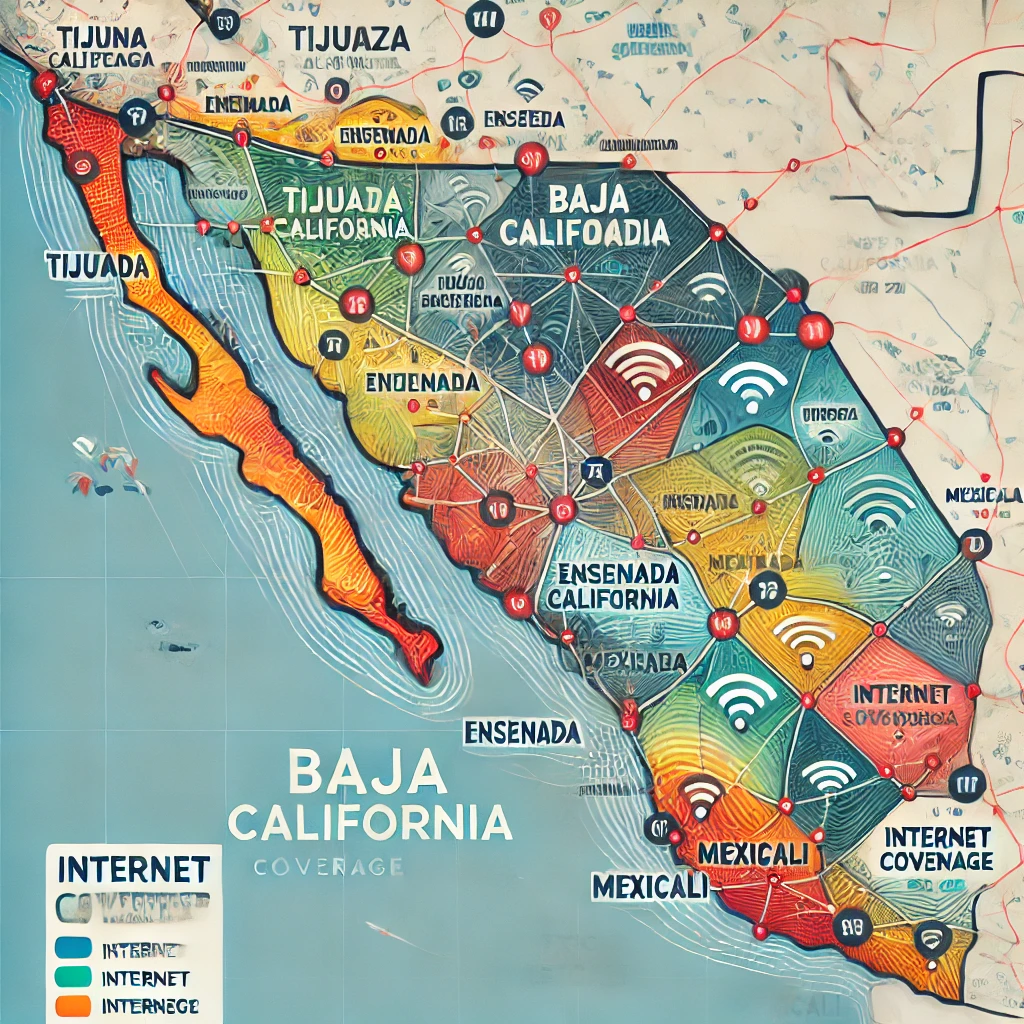Introduction
Are you curious about the Internet in Baja California? From local businesses to tourists, internet access plays a vital role in this region’s daily life. In this blog, we’ll explore everything you need to know about internet access in Baja California—from providers and speeds to the future of connectivity in this unique area.
The Evolution of Internet in Baja California
Over the years, Baja California has transformed from dial-up connections to high-speed fiber optics, keeping up with global internet trends. This evolution shows how Baja California has adapted to meet increasing digital demands, enabling better access to information and services.
Current Internet Providers in Baja California
Baja California offers several internet providers, including Telmex, Izzi, and Totalplay. Each has distinct service options, catering to both casual users and those needing high-speed connections for work or streaming. Here’s a quick look at what some of these major providers offer:
- Telmex: Known for its reliable DSL and fiber optic options, offering plans with speeds up to 200 Mbps.
- Izzi: Provides cable internet with speeds suitable for streaming and gaming, available in most urban areas.
- Totalplay: Popular for its fiber optic services, with high-speed packages and TV bundles.
Internet Speed and Availability
The average internet speed in Baja California varies depending on location. Urban areas like Tijuana enjoy higher speeds, while rural parts may still face slower connections. Currently, most residents experience speeds ranging from 10 Mbps to over 100 Mbps, depending on their provider.
Broadband vs. Mobile Internet in Baja California
Broadband remains the preferred choice for home users due to stable connections and higher speeds, while mobile internet serves those on the go. Many residents use a mix of both, relying on broadband at home and mobile networks for connectivity around town.
The Role of the Internet in Baja’s Economy
For local businesses, the internet has opened up new avenues for growth. E-commerce has become particularly significant, allowing Baja’s artisans and businesses to reach customers far beyond the state. The internet’s role is vital for sectors like tourism, which heavily depends on online bookings and reviews.
Internet Access in Schools and Libraries
In an effort to boost digital literacy, Baja California’s schools and libraries have expanded internet access. Government initiatives are focused on improving connectivity in educational settings, ensuring that students have the resources needed for digital learning.
Digital Divide in Baja California
Despite advancements, a digital divide still exists. Rural areas and low-income families often struggle with limited access or affordability issues. However, local organizations are working hard to close this gap, bringing the internet to underserved communities.
Internet for Remote Work and Education
With the rise of remote work and online classes, the demand for reliable internet has never been higher. Baja California’s internet infrastructure supports this shift, though rural areas may find it challenging to keep up. Many urban dwellers enjoy seamless connections, making remote work a feasible option.
Internet in Tourism and Hospitality
For tourists, staying connected is a must. Most hotels in Baja California offer Wi-Fi, and many public areas provide free or low-cost internet access. This connectivity makes it easier for travelers to explore and share their experiences in real-time.
Challenges Facing Internet Access in Baja California
Baja California faces challenges like outdated infrastructure in some areas and high costs in others. These factors can limit access, especially for those in remote locations. Efforts to improve affordability and expand infrastructure are ongoing but face logistical and financial hurdles.
Government Initiatives and Regulations
The government of Baja California is actively working to improve internet access through subsidies and policy changes. These initiatives aim to make internet access more affordable and widespread, ultimately benefiting the entire region.
Future Trends in Baja California’s Internet
Looking ahead, Baja California is set to adopt emerging technologies like 5G and expanded fiber optics. These advancements promise faster speeds and more reliable connections, setting the stage for a digital future where everyone has access.
Comparing Baja California’s Internet with Other Regions
While Baja California has made significant strides, it still lags behind some U.S. states in terms of average speed and availability. Compared to other Mexican states, however, Baja California ranks quite high, benefiting from its proximity to the U.S. and access to better infrastructure.
Conclusion
Internet in Baja California has come a long way, yet there’s still room for growth. With government efforts and advancements in technology, the region is set to overcome existing challenges and embrace a fully connected future. Whether you’re a resident or a visitor, staying connected in Baja California is only set to get easier and faster!
FAQs
- What are the main internet providers in Baja California?
Telmex, Izzi, and Totalplay are the primary providers, offering a mix of DSL, cable, and fiber optic options. - Is mobile internet available across Baja California?
Yes, mobile internet is widely available, with major providers offering coverage in most areas, though speeds can vary. - How fast is the internet in Baja California?
Speeds vary by location, with urban areas enjoying faster connections of up to 200 Mbps, while rural areas may see lower speeds. - What are the main challenges to internet access in Baja California?
Challenges include infrastructure limitations, particularly in rural areas, and high costs for high-speed connections. - What is the future of internet access in Baja California?
The future looks promising with upcoming 5G and fiber optic expansions, which will improve speed and availability.










